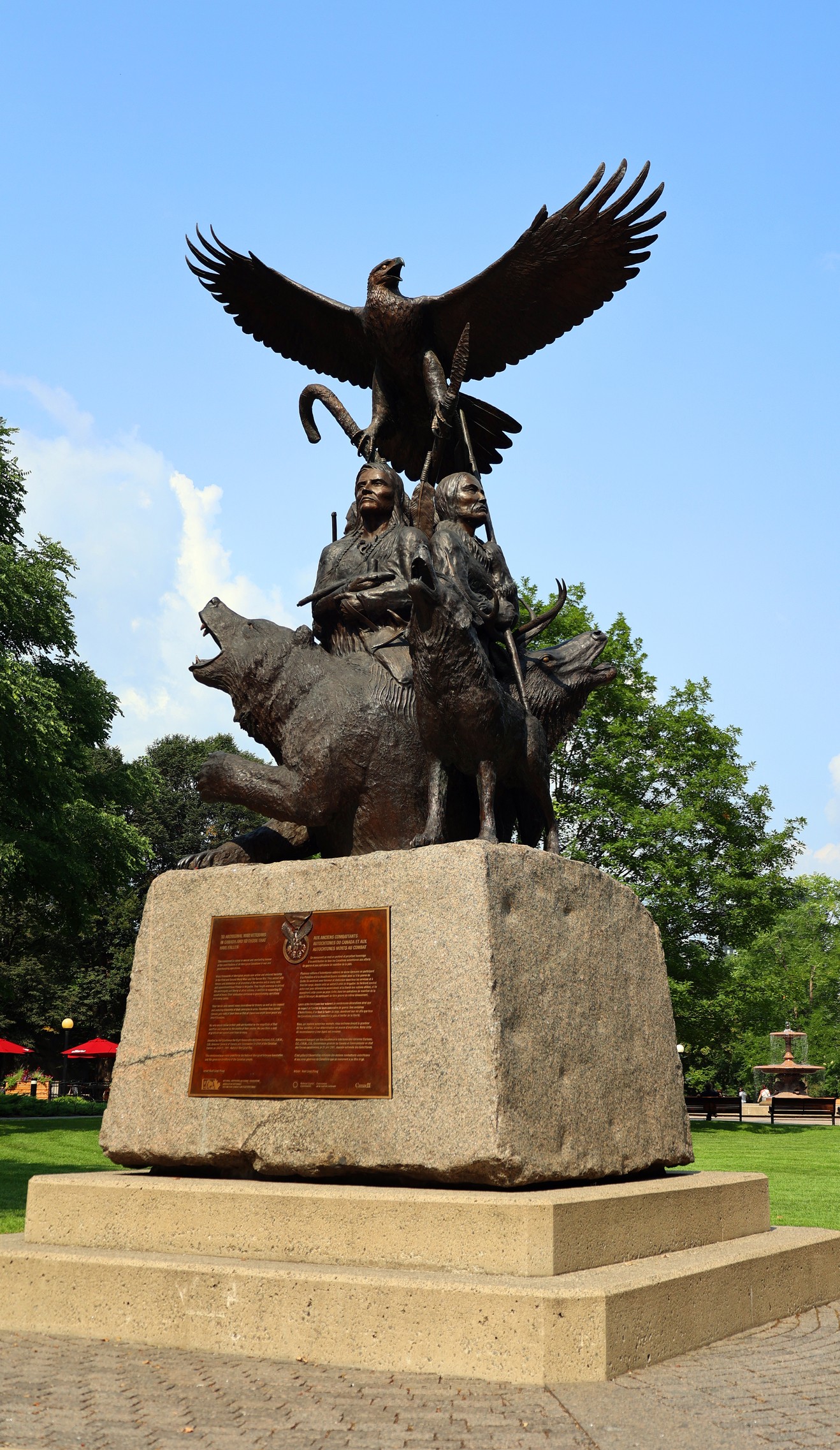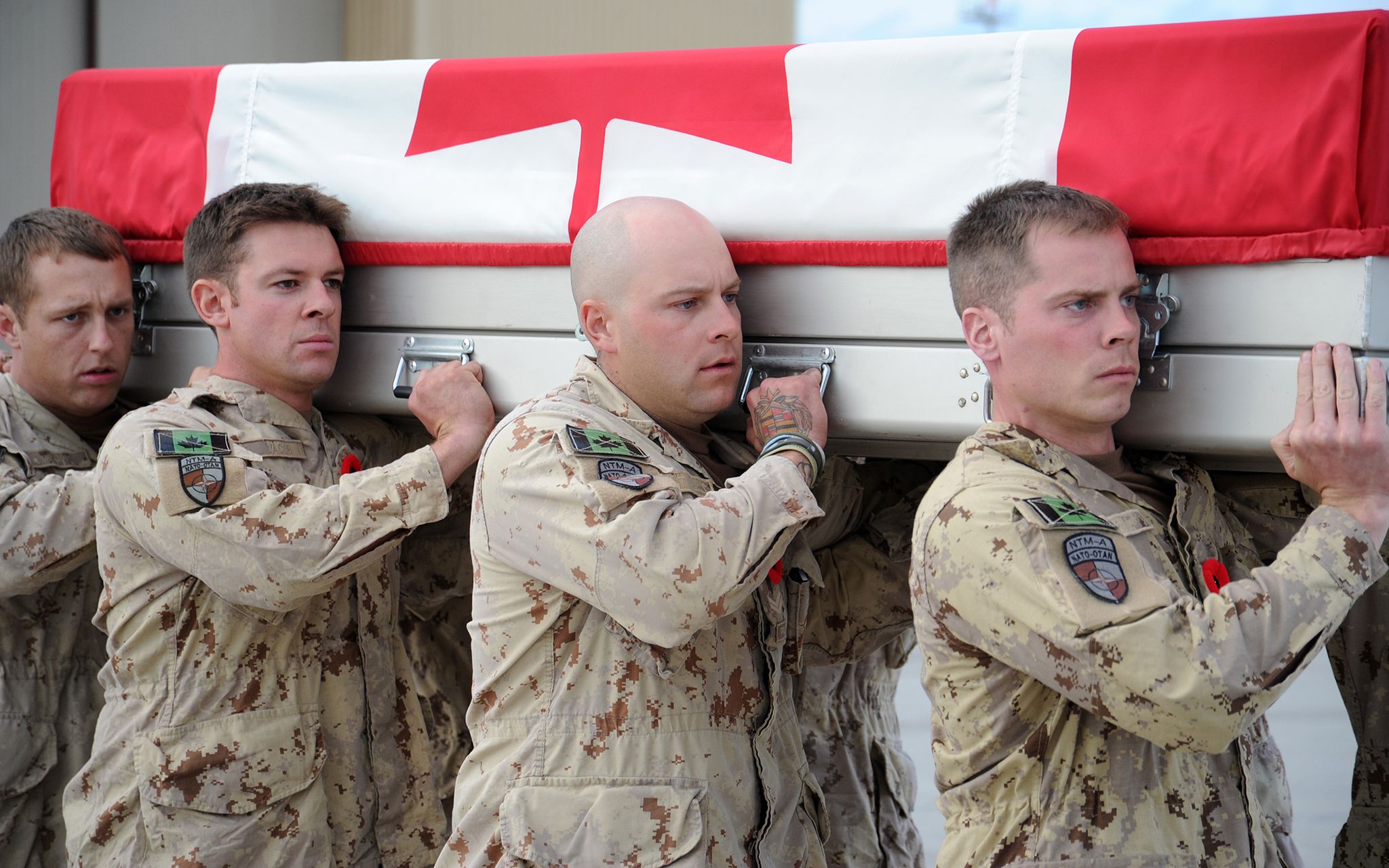Browse "Military"
-
Article
HMS St Lawrence (British Warship of the War of 1812)
The HMS St Lawrence was the largest warship ever built on the Great Lakes during the age of sail. During the War of 1812, supply, reinforcement and the movement of troops for attack all depended on the naval control of the lakes.
"https://development.thecanadianencyclopedia.ca/images/tce_placeholder.jpg?v=e9dca980c9bdb3aa11e832e7ea94f5d9" // resources/views/front/categories/view.blade.php
https://development.thecanadianencyclopedia.ca/images/tce_placeholder.jpg?v=e9dca980c9bdb3aa11e832e7ea94f5d9
-
Editorial
Editorial: Igor Gouzenko Defects to Canada
The following article is an editorial written by The Canadian Encyclopedia staff. Editorials are not usually updated. A knock on the apartment door froze him in his steps. Another knock, louder, more insistent. The knocking turned to pounding. A voice called his name several times. Finally, the pounding stopped, and he heard footsteps going down the stairs. He knew he needed help.
"https://d2ttikhf7xbzbs.cloudfront.net/media/media/ef877228-646a-42e0-8096-b939feb24100.jpg" // resources/views/front/categories/view.blade.php
https://d2ttikhf7xbzbs.cloudfront.net/media/media/ef877228-646a-42e0-8096-b939feb24100.jpg
-
Article
Imperial Munitions Board
Imperial Munitions Board, established November 1915 in Canada by the British Ministry of Munitions, with Canadian government approval. Headed by J.W. Flavelle, a prominent Toronto businessman, the board was responsible for letting contracts on behalf of the British government for the construction of war materials in Canada.
"https://d2ttikhf7xbzbs.cloudfront.net/media/media/6d4e231e-f064-4897-b648-57e415ca7a8c.jpg" // resources/views/front/categories/view.blade.php
https://d2ttikhf7xbzbs.cloudfront.net/media/media/6d4e231e-f064-4897-b648-57e415ca7a8c.jpg
-
Article
In Flanders Fields
One of history's most famous wartime poems, "In Flanders Fields" was written during the First World War by Canadian officer and surgeon John McCrae.
"https://d2ttikhf7xbzbs.cloudfront.net/media/media/4be09c8b-7a2d-4c49-8972-670e287489aa.jpg" // resources/views/front/categories/view.blade.php
https://d2ttikhf7xbzbs.cloudfront.net/media/media/4be09c8b-7a2d-4c49-8972-670e287489aa.jpg
-
Article
In Flanders Fields Music
In Flanders Fields is a poem which, in various musical settings, has become a traditional part of Remembrance Day services commemorating those killed in the First World War, 11 November 1918, and subsequent conflicts.
"https://development.thecanadianencyclopedia.ca/images/tce_placeholder.jpg?v=e9dca980c9bdb3aa11e832e7ea94f5d9" // resources/views/front/categories/view.blade.php
https://development.thecanadianencyclopedia.ca/images/tce_placeholder.jpg?v=e9dca980c9bdb3aa11e832e7ea94f5d9
-
Article
Indigenous Peoples and the World Wars
Thousands of Indigenous peoples served in the Canadian military forces in the First World War and Second World War; most were volunteers. On the home front, most Indigenous communities participated in the national war effort in diverse ways. The world wars were dramatic events for Indigenous peoples in Canada (see Indigenous Peoples and the First World War and Indigenous Peoples and the Second World War). Conflict offered these marginalized populations opportunities to renew warrior cultural traditions, reaffirm sacred treaties, prove their worth to indifferent non-Indigenous Canadians, break down social barriers and find good jobs.
"https://d2ttikhf7xbzbs.cloudfront.net/media/media/807e5d85-0d60-4180-8400-b1badabf3486.jpg" // resources/views/front/categories/view.blade.php
https://d2ttikhf7xbzbs.cloudfront.net/media/media/807e5d85-0d60-4180-8400-b1badabf3486.jpg
-
Article
Indigenous Veterans Day
Indigenous Veterans Day is observed in Canada on 8 November. The day recognizes the contributions of First Nations, Inuit and Métis veterans of the Canadian armed forces.
"https://d2ttikhf7xbzbs.cloudfront.net/National-Aboriginal_Veterans-Monument.jpg" // resources/views/front/categories/view.blade.php
https://d2ttikhf7xbzbs.cloudfront.net/National-Aboriginal_Veterans-Monument.jpg
-
Article
Infantry
Known as the “Queen of Battle,” the infantry is the branch of the army that provides its primary fighters. The main responsibility of infantry soldiers is to “close with and destroy the enemy.” Although they are trained, armed and equipped to fight on foot, infantry soldiers are usually transported to the battlefield by other means. Infantry soldiers can also specialize as light, mechanized, airmobile, airborne and other types. The characteristics of infantry are mobility, firepower, flexibility, communications and vulnerability (to enemy action). Infantry soldiers are trained in a wide range of individual and crew-served weapons and work with the all-arms team of reconnaissance, armour, artillery, air defence, engineers, tactical aviation and other combat specialists. Except for a brief time during the feudal period (when cavalry dominated), the infantry has been the largest single component of armies since ancient times. In Canada, the infantry has always been the army’s largest element.
"https://d2ttikhf7xbzbs.cloudfront.net/Infantry/InfantryCorpsBadge.jpg" // resources/views/front/categories/view.blade.php
https://d2ttikhf7xbzbs.cloudfront.net/Infantry/InfantryCorpsBadge.jpg
-
Article
Canada and the War in Afghanistan
The war in Afghanistan (2001–14) was Canada’s longest war and its first significant combat engagement since the Korean War (1950–53). After the 2001 terror attacks on the United States, Canada joined an international coalition to destroy the al-Qaeda terrorist network and the Taliban regime that sheltered it in Afghanistan. (See 9/11 and Canada). Although the Taliban were removed from power and the al-Qaeda network was disrupted, Canada and its allies failed to destroy either group, or to secure and stabilize Afghanistan. More than 40,000 Canadian Armed Forces members served in the 12-year campaign. The war killed 165 Canadians — 158 soldiers and 7 civilians. Many Canadian veterans of the war in Afghanistan suffer from post-traumatic stress disorder.
"https://d2ttikhf7xbzbs.cloudfront.net/media/media/79d3d8d6-41ee-48aa-bf0a-0b70d9597e5f.jpg" // resources/views/front/categories/view.blade.php
https://d2ttikhf7xbzbs.cloudfront.net/media/media/79d3d8d6-41ee-48aa-bf0a-0b70d9597e5f.jpg
-
Article
Canada and the Italian Campaign
Canada’s longest Second World War army campaign was in Italy. Canadian forces served in the heat, snow and mud of the grinding, nearly two-year Allied battle across Sicily and up the Italian peninsula—prying the country from Germany's grip, at a cost of more than 26,000 Canadian casualties.
"https://d2ttikhf7xbzbs.cloudfront.net/media/media/b953ce91-4743-48e3-a180-ffe7c2816954.jpg" // resources/views/front/categories/view.blade.php
https://d2ttikhf7xbzbs.cloudfront.net/media/media/b953ce91-4743-48e3-a180-ffe7c2816954.jpg
-
Article
John Norton and the War of 1812
Canada is a country so vast that too often, it seems, its history is lost inside its geography. A striking example is the history of Indigenous peoples, whose long, rich narrative is well-preserved by them, but seldom gets the same attention on a broader scale — even when their stories affect us all.
"https://d2ttikhf7xbzbs.cloudfront.net/media/media/41ca7dbe-20b9-4db4-b6f0-911988594c22.jpg" // resources/views/front/categories/view.blade.php
https://d2ttikhf7xbzbs.cloudfront.net/media/media/41ca7dbe-20b9-4db4-b6f0-911988594c22.jpg
-
Article
Kangaroo APCs (Armoured Personnel Carriers)
“Kangaroo” is the nickname given to a series of military transport vehicles (APCs) designed by the Canadian army in 1944, during the Battle of Normandy. (See Second World War.) It was a modified version of existing armoured vehicles such as the M7 (Priest) self-propelled gun, the Ram tank and the Sherman tank. Major components of these vehicles, such as their turret, were removed, thus allowing them to be used to transport infantry soldiers, safe from enemy fire.
"https://d2ttikhf7xbzbs.cloudfront.net/media/media/a137744-v8.jpg" // resources/views/front/categories/view.blade.php
https://d2ttikhf7xbzbs.cloudfront.net/media/media/a137744-v8.jpg
-
Article
Khaki University
Khaki University (initially Khaki College), an educational institution set up and managed by the Canadian Army in Britain, 1917-19 and 1945-46. The program was rooted in the study groups of the Canadian YMCA and the chaplain services of the Canadian Army.
"https://development.thecanadianencyclopedia.ca/images/tce_placeholder.jpg?v=e9dca980c9bdb3aa11e832e7ea94f5d9" // resources/views/front/categories/view.blade.php
https://development.thecanadianencyclopedia.ca/images/tce_placeholder.jpg?v=e9dca980c9bdb3aa11e832e7ea94f5d9
-
Article
Koje-Do
Koje-Do (now Geojedo), is an island 40 kilometers southwest of Busan, South Korea, where the United States operated a prisoner of war (POW) camp during the Korean War. North Korean and Chinese prisoners rebelled and seized the camp.
"https://development.thecanadianencyclopedia.ca/images/tce_placeholder.jpg?v=e9dca980c9bdb3aa11e832e7ea94f5d9" // resources/views/front/categories/view.blade.php
https://development.thecanadianencyclopedia.ca/images/tce_placeholder.jpg?v=e9dca980c9bdb3aa11e832e7ea94f5d9
-
Article
La Maison des Canadiens
“Within sight of this house over 100 men of the Queen’s Own Rifles were killed or wounded, in the first few minutes of the landings.”
"https://d2ttikhf7xbzbs.cloudfront.net/media/media/3a69be0a-4b74-40aa-a2d9-cfe6007d77a2.jpg" // resources/views/front/categories/view.blade.php
https://d2ttikhf7xbzbs.cloudfront.net/media/media/3a69be0a-4b74-40aa-a2d9-cfe6007d77a2.jpg
